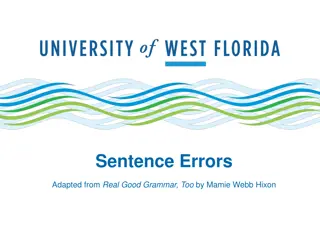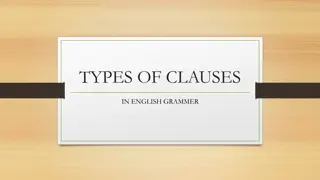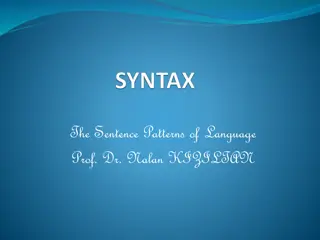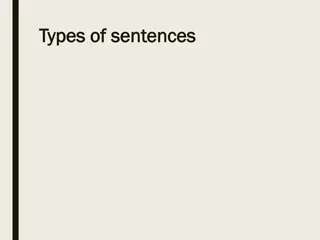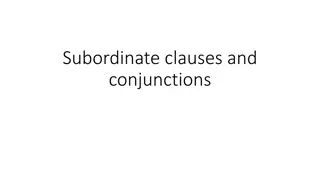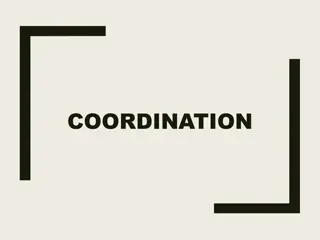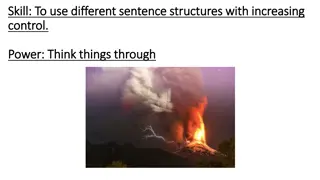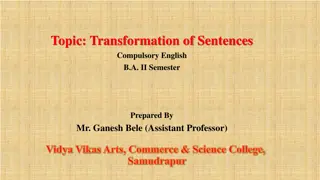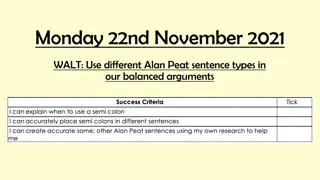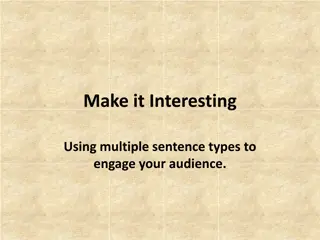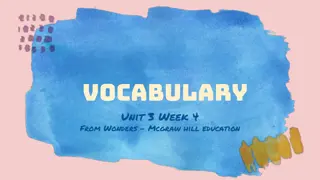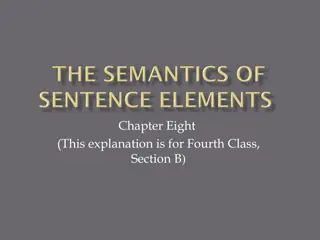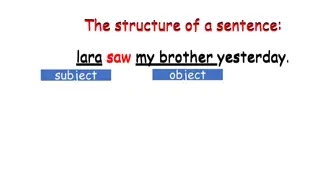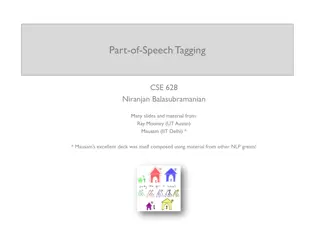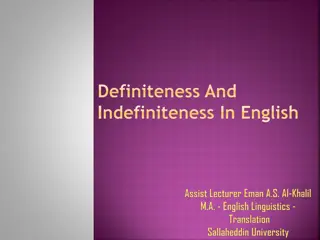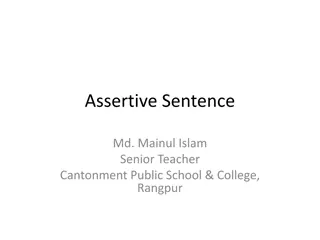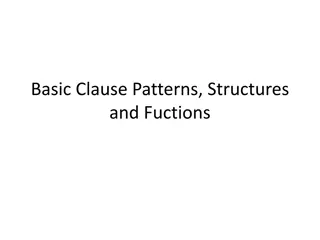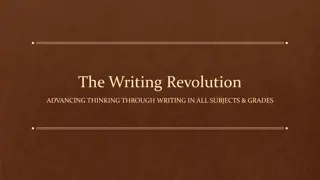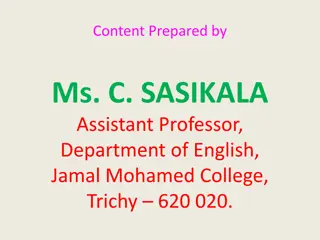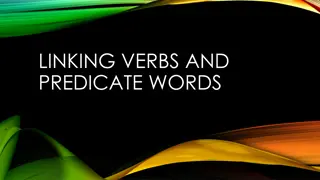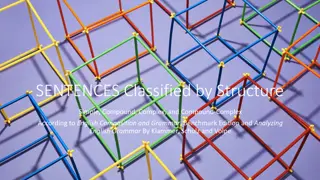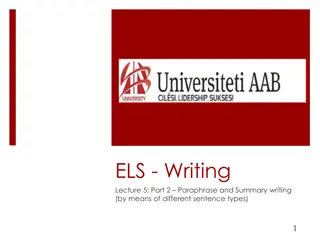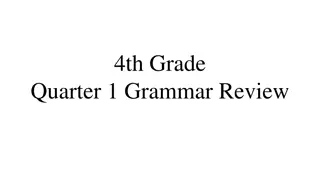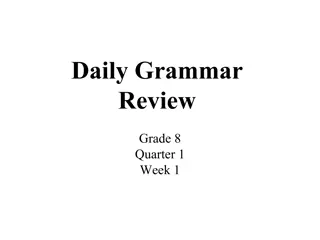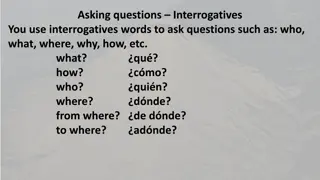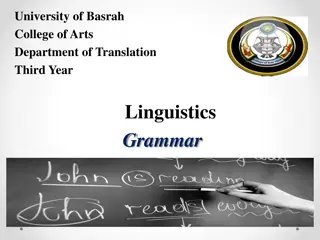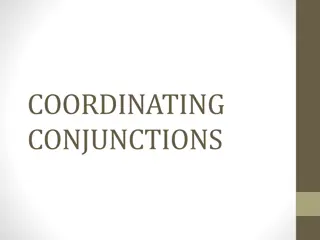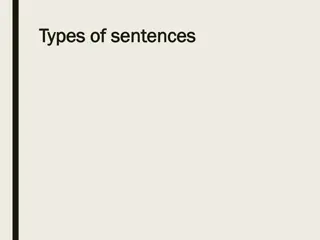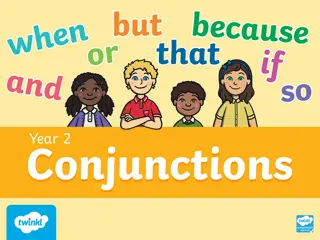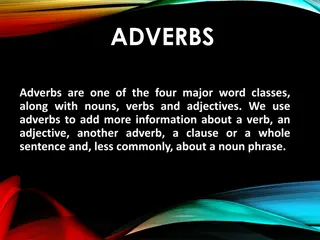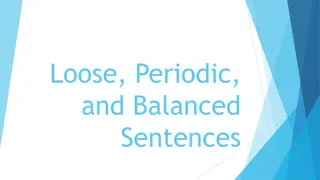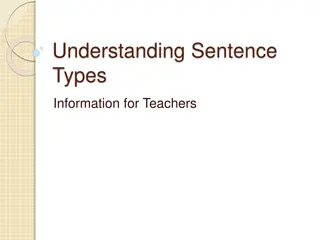Understanding English Sentence Structure Explained
Master the essentials of English sentence structure with Dr. Fitua Al-Saedi. Learn about complete sentences, independent and dependent clauses, subjects, verbs, objects, prepositional phrases, and more. Discover the key components that make up a sentence and follow the rules for clear and effective written expression.
Download Presentation

Please find below an Image/Link to download the presentation.
The content on the website is provided AS IS for your information and personal use only. It may not be sold, licensed, or shared on other websites without obtaining consent from the author. Download presentation by click this link. If you encounter any issues during the download, it is possible that the publisher has removed the file from their server.
E N D
Presentation Transcript
Sentence structure Dr Fitua Al-Saedi
What is a complete sentence? Sentences provide us with the framework for the clear written expression of our ideas. The goal in writing is always to write in complete sentences which are correctly punctuated. A complete sentence always comprises a verb, expresses a complete idea and makes sense standing alone. Sentences always start with a capital letter and end in either a full stop, exclamation or question mark.
Independent clause: An independent clause can stand alone as a sentence. It contains a subject and a verb and is a complete idea. o I like pizza. o He reads many books. Dependent clause: A dependent clause is not a complete sentence. It must be attached to an independent clause to become complete. This is also known as a subordinate clause. o Although I like pizza, o Because he reads many books,
Subject: A person, animal, place, thing, or concept that does an action. I like pizza. He writes stories. Verb: Expresses what the person, animal, place, thing, or concept does. He reads many books. The movie is good.
Object: A person, animal, place, thing, or concept that receives the action. He reads many books. Prepositional Phrase: A phrase that begins with a preposition (i.e., in, at for, behind, until, after, of, during) and modifies a word in the sentence. I like pizza for dinner. He reads many books in the library.
English Sentence Structure The following statements are true about sentences in English: A new sentence begins with a capital letter. He wrote a literature review. A sentence ends with punctuation (a period, a question mark, or an exclamation point). She obtained her degree. A sentence contains a subject that is only given once. Sarah She obtained her degree.
~~~English Sentence Structure A sentence contains a verb or a verb phrase. o He obtained his degree. A sentence follows Subject + Verb + Object word order. o He (subject) obtained (verb) his degree (object). A sentence must have a complete idea that stands alone. This is also called an independent clause. o He obtained his degree.
Simple Sentences A simple sentence is a sentence that consists of just one independent clause . Here are a few examples: A day without sunshine is like night. She completed her literature review. The bus was late. He waited for the train.
More about Simple Sentences A simple sentence is not always a short sentence. A simple sentence could have a compound subject. For example: Alice and Daniel like walking. A simple sentence could also have a compound predicate (when two or more verbs share the same subject). For example: Alice likes fishing but hates hunting. Alice likes walking and fishing but hates running and hunting.
Compound Sentences A compound sentence contains at least two independent clauses. These two independent clauses can be combined with a comma and a coordinating conjunction or with a semicolon. Here are a few examples: I used to jog, but the ice cubes kept falling out of my glass. She completed her literature review, and she created her reference list.
Complex Sentences A complex sentence contains at least one independent clause and at least one dependent clause. If a sentence begins with a dependent clause, note the comma after this clause. If, on the other hand, the sentence begins with an independent clause, there is not a comma separating the two clauses. Here are a few examples: Although she completed her literature review, she still needed to work on her methods section. * Note the comma in this sentence because it begins with a dependent clause. They studied the rules for many hours as they were so interesting. * Note that there is no comma in this sentence because it begins with an independent clause.
Compound-Complex Sentences Sentence types can also be combined. A compound-complex sentence contains at least two independent clauses and at least one dependent clause. She completed her literature review, but she still needs to work on her methods section even though she finished her methods course last semester.


